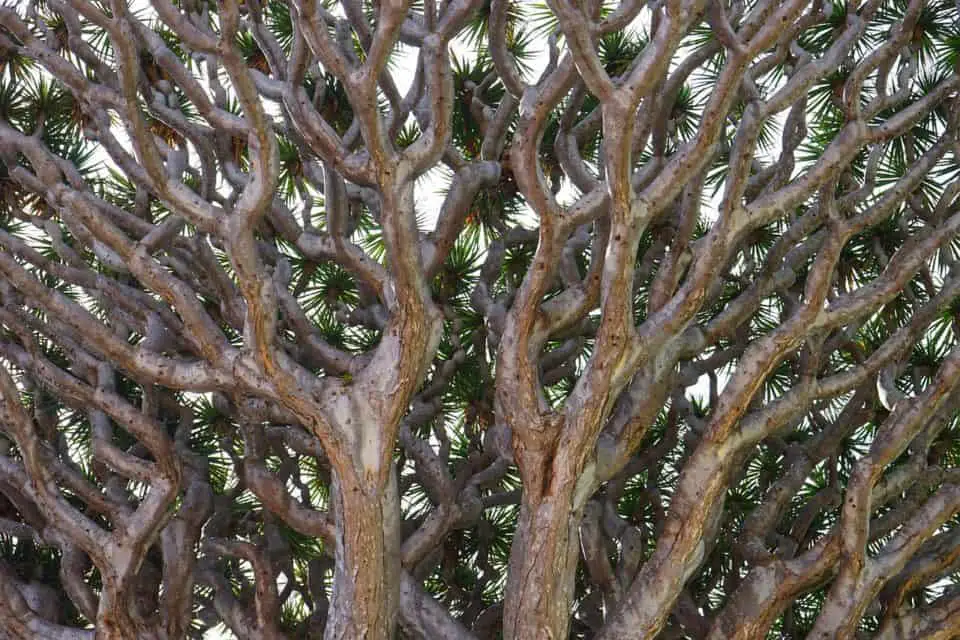Some links in the post are affiliate links and I get a commission from purchases made through some links found in the post.
Welcome to how to save a dying dracaena marginata plant, before we get into the main problems that can affect this plant we will first look at what this plant is.
The Dracaena Marginata plant, also known as the Madagascar Dragon tree, is an evergreen plant native to the Madagascar region.
It does well in tropical and subtropical areas and even better when grown in indoor places such as homes and offices. It also goes by other names such as:
- Tree Dracaena
- Ribbon Plant
- Red Margined Dracaena
- Dragon Blood Tree
- Red Edge Dracaena
Typically, this tree will have spiky leaves and slender stalks that add to the allure of any room. It can grow up to eight feet indoors and twenty feet outdoors.
Its slow-growing nature makes it ideal for long-life gardening. Caring for this air purifying tree should be relatively easy though you may face some challenges along the way.
To save your dying Dracaena Marginata plant, you have to understand what’s causing its death in the first place.
Normally a dracaena marginata plant is dying due to overwatering. This can lead to root rot and the leaves turning yellow. To fix this make sure the dracaena has good drainage and not damp soil.
Why is my Dracaena Marginata Stem Drooping?
Drooping stems and leaves are a sign of distress. Let’s look at some reasons why the stem of your dracaena marginata plant may start to droop and how to save it from dying:
1) Poor Watering Schedule
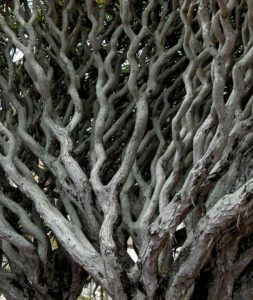 Generally, the Dracaena Marginata is a drought-resistant plant. You should allow the soil to be completely dry before adding more water.
Generally, the Dracaena Marginata is a drought-resistant plant. You should allow the soil to be completely dry before adding more water.
Unless you live in a very hot area, watering should not take place more than once a week.
Most people water the plants every 10 days but again, this depends on how hot the region is.
If you give your plant too much water and the roots sit in it for a long time, root rot begins and the leaves start to fall off as the stem droops.
You should allow the soil to dry out completely before resuming the watering practices.
On the other hand, you could be underwatering your plant. As much as it is hardy, it still needs water regularly for it to thrive.
Otherwise, the roots will not have water to act as a medium as they soak up nutrients from the soil.
Striking a balance is essential. Thus, if the soil feels too dry, water it thoroughly until you see excess water coming out of the drain holes at the bottom of the pot.
If you need help watering your plant, try using this automatic drip irrigation kit.
Signs of Overwatering Your Dracaena Marginata
Did you know that overwatering is a leading cause of plant deaths around the world? Giving your plant too much water could kill it. Signs of Overwatering Your Dracaena Marginata include:
- Drooping stems and leaves
- The leaves turning yellow
What about yellow bottom leaves? Please note that as the plant ages, the lower leaves turn yellow and fall off.
It’s quite normal for this to happen. However, if leaves in other parts of the plant turn yellow, you may have an overwatering problem.
How to Save an Overwatered Dracaena Marginata Plant
To save an overwatered dracaena marginata plant, first sssess the state of the roots.
You do this by tilting the plant out of the pot, you can loosen the soil around the roots and check if they have suffered damage.
If they appear wet, that is fine. However, if they appear soggy and mushy, they have suffered damage and you will need to repot the plant.
No Root Rot
If no root rot has occurred, you should:
1) Assess the number of drainage holes in the pot and if these are adequate to drain enough water.
You might find that the reason your roots have sat in water owes to lack of adequate drainage. If these are not adequate, make more holes.
Also, make sure that the pot does not sit directly on the water.
If you’re using a pebble tray for humidity, make sure there is enough space between the water around the stones and the pot’s bottom.
2) Check the state of the soil. Your potting mix could also be to blame. Ideally, you should have one part of perlite, one of soil, and another of peat moss.
That should be balanced enough to support healthy plant growth.
3) Move the plant to a spot where it can get enough sunlight.
4) Do not water it for the next few days and keep checking to see if it has recovered. (If it does not, you will need to repot the plant as covered under root rot.)
5) Once the plant recovers, start a new watering regime that will not drown the roots.
Root Rot
If root rot has occurred, you must assess the damage first. Unfortunately, root rot is a fast killer and if most or all the roots have already rotted, the plant may not recover.
However, you can always try your luck by repotting the plant as follows:
- Carefully remove the plant from the pot and get rid of the soil around the roots
- Cut off all soggy and damaged roots
- Prepare a new potting mix in a similar size pot. However, if you are repotting an already rootbound plant, go for a pot that is a size bigger.
- Place the plant in the new pot and cover the roots with soil
- Water the soil thoroughly and let the excess water drain through the drainage holes
Signs of Underwatering Your Dracaena Marginata
This hardy dracaena marginata plant can start showing signs of underwatering such as:
- Wilting leaves
- Yellow and crisp leaves
- A very dry soil mix
How to Save an Underwatered Dracaena Marginata Plant
Luckily, a neglected plant is much easier to save than an overwatered one. Do not overwater the plant.
Instead, bring a dracaena marginata plant back to life by giving it small amounts of water over time until it starts to bounce back. It will be more of a waiting game in this case.
How to Prevent Watering Problems
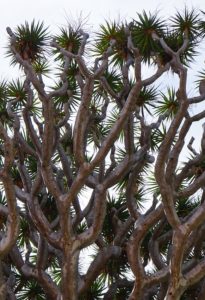 You should only water the tree when the top layer of the soil has dried completely which should be about once each week.
You should only water the tree when the top layer of the soil has dried completely which should be about once each week.
Soak the soil thoroughly and ensure the pot does not sit in water. During winter, you will need to cut back on the watering without neglecting the plant.
Please note that watering needs are not universal. Instead, they come down to:
- The season
- The climate (how hot it is)
- The size of the plant
- The size of the pot
- The material of the pot
It’s better for the plant to dry out for a while compared to drowning its roots in water.
2) Fungal Infection
If fungus travels from the roots to the stems, the plant will start drooping.
It often results from overwatering where the roots sit in water for long periods. Unfortunately, most cases are not salvageable.
However, you can always try and repot the plant. Follow the procedure we outlined under Root Rot and add some cinnamon on the roots. Good luck!
3) Poor Lighting
The Dracaena Marginata does best in bright indirect light. However, it can adapt to medium and low levels of light.
If your plant is struggling due to light, trying using this to help regulate the lighting.
Signs of Too Much Light
Too much light scorches the leaves and will show as:
- Brown spots at the tips of the leaves
- Dropping leaves
How to save a Scorched Dracaena Marginata Plant
Luckily, fixing light issues is much easier than dealing with root rot. All you need is to adjust the location of the plant to enable it to get much less light:
- For plants in windows, use curtains or blinds to prevent direct exposure to the sun
- Allow the plant to remain in the new spot and assess if it’s doing better
Signs of Inadequate Light
If you leave your plant in a spot with dim light, you will notice:
- Pale leaves
- Stunted growth
- Small new leaves
If you have a spot in your house that has low light, check out the best tall indoor plants for low light.
How to save a Stunted Plant
You can:
- Use natural lighting: If you live in an area where you get enough natural light, move the plant near a window and add some curtains or blinds to protect it from direct exposure.
- Use artificial lighting: Dracaena Marginata can grow even in artificial lighting. Thus, you can always supplement what’s available by using such light. Even so, be watchful of the distance because even artificial lighting can damage plants.
How to Prevent Light Problems
Leave the plant in a spot with indirect bright light to help it thrive. If the natural lighting is not adequate, do not hesitate to incorporate artificial lighting.
Every week, turn it a quarter way to allow all sections to get adequate lighting and prevent spindly growth.
For more on lighting, check out our article on the light requirements for a dracaena marginata.
4) Temperature Problems
This plant thrives in temperatures between 65- and 90-degrees Fahrenheit.
Signs of Low Temperatures
Anything below this 65- and 90-degrees Fahrenheit range can show up as:
- Stunted growth
- Discolored plant parts
- Decay on the leaves
This plant is so susceptible to temperature changes that one week in temperatures below 55 degrees Fahrenheit will damage it. You need to keep it safe from cold drafts at all times.
Signs of High Temperatures
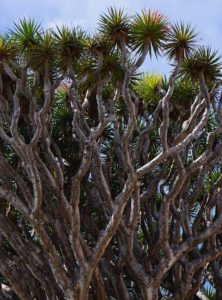 As much as this is a tropical plant, it does not want to be in the highest temperatures possible.
As much as this is a tropical plant, it does not want to be in the highest temperatures possible.
Anything above the 65- and 90-degrees Fahrenheit range will prevent the plant from taking up enough water to account for evaporation and will cause:
- Drooping leaves
- General wilting
How to Fix Temperature Problems
Your plant should grow in controlled temperatures and should not be near air conditioning drafts, open windows during winter, heating vents, or direct sun exposure.
Anything below or above 65- and 90-degrees Fahrenheit is a no.
5) Rootbound Plant
If the roots of your plant have become too big for the pot, the plant will start drooping because the roots can no longer get enough nutrients and water to support its growth.
Luckily, the dracaena is a slow-growing plant and you will not deal with this often.
However, if you have covered the possible reasons above and haven’t found a culprit, you may be dealing with a rootbound plant.
Signs Your Dracaena Marginata Plant is Rootbound
A rootbound plant can be hard to diagnose. You can end up thinking the plant is underwatered yet its roots are in serious need of more space. You will often see signs such as:
- Wilting stem and leaves
- Yellowing and browning of the leaves
- Stunted growth
- A cracked or bent out of shape container
It’s easy to mistake these as signs of neglect. However, you can easily check for any rootbound signs by pulling the plant out of the container.
If it’s rootbound, the roots and the soil will come out as one section with the roots in one bunch.
In some cases, the roots may even be stuck in the drainage holes or may have come to the soil surface.
How to Fix a Rootbound Dracaena Marginata Plant
You will need to repot the plant as we indicated under Root Rot. However, with a rootbound plant, it might be a bit more challenging.
You will need to delicately untangle the roots using your fingers to give them some growing room.
If you find this hard to do, you can soak the plant in water overnight to soften the roots.
If this still does not work, you will need to use a sterile sharp knife to cut the roots in some sections to give you some wiggle room.
You can then proceed to move the plant to a container that is a size bigger and add adequate potting soil.
Please note that this move can be stressful and you will need to hydrate the plant to keep stress at bay.
You may also like: 5 great benefits of a dracaena for your home
6) Pest Infestation
If all other reasons above do not check out, your plant may be having a pest infestation.
Typically, this happens when you have overwatered your plant or provided it with low lighting, thus creating an ideal environment for pest infestation. Generally, you can come across:
- Mealybugs
- Spider mites
- Aphids
These pests feed on juices in the plant’s leaves and this can cause drooping.
Signs of Pest Infestation
It’s hard to spot pest infestations other than by drooping and yellowing leaves.
Instead, you have to check under leaf joints and leaf surfaces for any changes and deal with them immediately.
How to Fix Pest Infestation
The control will often depend on the pest as follows:
- Spider mites: A soapy spray
- Mealybugs: An alcohol spray
- Scales: A horticultural spray
Alternatively, you can wash the plant in the rain or sink and make sure you give it a good wash to eliminate all possible pests.
How to Prevent Pest Infestation
The good news is that you will rarely deal with infestations. However, your plant can become susceptible to pests if you do not follow the recommended care practices.
As such, you must always adhere to the plant requirements and practice vigilance to spot and eliminate possible problems.
You may also like: Dracaena vs Yucca
Why is my Dracaena Marginata Stem Wrinkled?
A wrinkled dracaena marginata stem can result from:
1) Underwatering
As we earlier covered under Signs of Underwatering Your Dracaena, your plant can show signs of distress by presenting leaf loss and yellowing leaves.
Additionally, the stalk can appear wrinkly. Please follow the steps outlined under How to Save an Overwatered Plant.
2) Overwatering
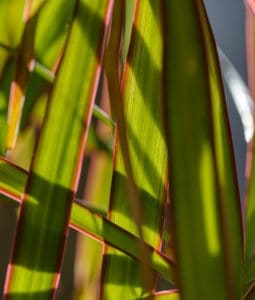
The stem can also appear wrinkly with browning leaf tips if the plant is overwatered.
It can even be worse if the plant has poor lighting, and this may show in terms of a rotten-like stem.
In this case, please refer to our previous sections on How to Save an Overwatered Plant and How to save a Stunted Plant.
Again try using a automatic drip irrigation kit.
3) A Dead Stem
Your stem could also be dead. In this case, the signs will be:
- Significant leaf loss
- Dark spots on the bark
- Wrinkled stems and branches
- New offshoots at the base
How to Save a Dead Stem
Your stem can die due to several reasons, including root rot. At this point, there is not much that you can do other than wait for the plant to regain good health. Do not:
- Repot the plant
- Use fertilizer on the soil
- Replace the potting mix
Instead, you should:
- Cut off the wrinkled stem at the point where new shoots have emerged
- Adjust the watering and only give the plant water when the top layer of the soil has dried completely
- Wait: The chances are 50-50 at this point. The plant has likely suffered extensive root damage to get to this point owing to overwatering. Use less water and ensure the plant has enough light and humidity and is in the ideal temperature range. The plant will be very weak at this point and will not do well with added stress.
Please note that as the plant gets older, it will need less water, and giving it more than it needs can cause wrinkling and root rot.
You can refer to How to Prevent Watering Problems for more guidance.
You may also like: How Big Can Dracaena Get?
Why is my Dracaena Stem Turning Brown?
Typically, the Dracaena Marginata has a brownish stem which should not be a cause for worry.
However, a darkening stem indicates that all is not well with your watering practices and the stem has started rotting. You need to start making changes fast.
How to Save a Rotting Stem
There are two ways to save a rotting stem:
Overall Healthy Stem
This method works if the stem rot has only affected part of the plant and much of the stem is still healthy.
- Prepare sharp shears and a glass of clean water
- Cut a few six-inch pieces of parts of the stem that have not suffered any rot
- Place the stems in a glass of water ensuring the lower two inches are in the water
- Add water to the glass daily to account for evaporation
- Change the water once it turns color
- Watch out for the growth of nodules as these will give rise to roots
Damaged Stem
If the stem rot has affected most of the stalk, you can root side shoots instead.
- Make sure the shoots do not have any signs of rotting
- Place the shoots in a moist rooting medium
- Cover them with a bag to increase the humidity
- Once the shoots start rooting, take off the bag
You can transplant the new plants when they are ready to establish in a potting mix.
How to Prevent Stem Rot
You need to practice good watering practices as shown under How to Prevent Watering Problems and provide the plant with adequate lighting as we covered on How to Prevent Light Problems.
Why are the Leaves on my Dracaena Marginata Turning Brown?
Other than a browning stem on your dracaena marginata, you may also face browning leaves. These can result from:
1) Too Much Light
In this case, the browning will start at the tips before affecting the whole leaf. If you do not address it, the leaves will start dropping.
Please refer to our section on How to save a Scorched Plant for more insight.
2) Fertilizer Build-Up
Feeding your plant is a good idea but you may be giving it more than it needs which can lead to build-up.
These deposits can damage the roots and make it hard for the plant to absorb water, thus causing the browning in the leaves. Eventually, the plant could die.
Signs of an Overfed Plant
Look out for:
- A wilting plant
- Browning leaf tips and edges
- Salt build-up on the soil surface
- Yellowing leaf tips and edges (from too much fluoride)
Please note that some of these signs can also indicate other problems. Thus, before making any drastic changes, make sure overfeeding is the problem.
3) Low Humidity
In homes that use air conditioning or during winter when the temperatures drastically drop, low humidity can be a problem.
It will make the plant dry out faster and this can manifest in browning leaves.
Signs of Low Humidity
Other than browning leaves, you may also notice:
- Leaf yellowing
- Leaf drop
How to Fix Low Humidity
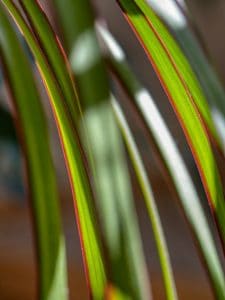 Luckily, it takes only a few tricks to get the work done. These include:
Luckily, it takes only a few tricks to get the work done. These include:
- Placing the pot in a dish of water and pebbles. As the water evaporates, it will create a humid environment. Please note that the pot should sit on the pebbles and not the water.
- Having most plants in one spot so that as they transpire, they create a humid environment.
- Using a humidifier
- Occasionally misting the plant
How to Prevent Low Humidity
As much as this is a tropical plant, it can survive normal humidity.
As long as you keep the temperature in the required range and do not place the plant near central heating or AC ducts, it should be fine.
Final Thoughts: How to Save a Dying Dracaena Marginata Plant
The Dracaena Marginata tree should be pretty easy to care for once you are aware of vital warning signs and how you should respond to them. Happy Gardening!
Written by: Daisy Njeri
Before you go, here are some more related articles I encourage you to read below to help solve more of your gardening issues:
How To Save A Dying Staghorn Fern
How Do You Save A Damaged Monstera
How to Care for a Naga Linga Tree in Your House
Top 5 Best Small Trees with Non Invasive Roots

